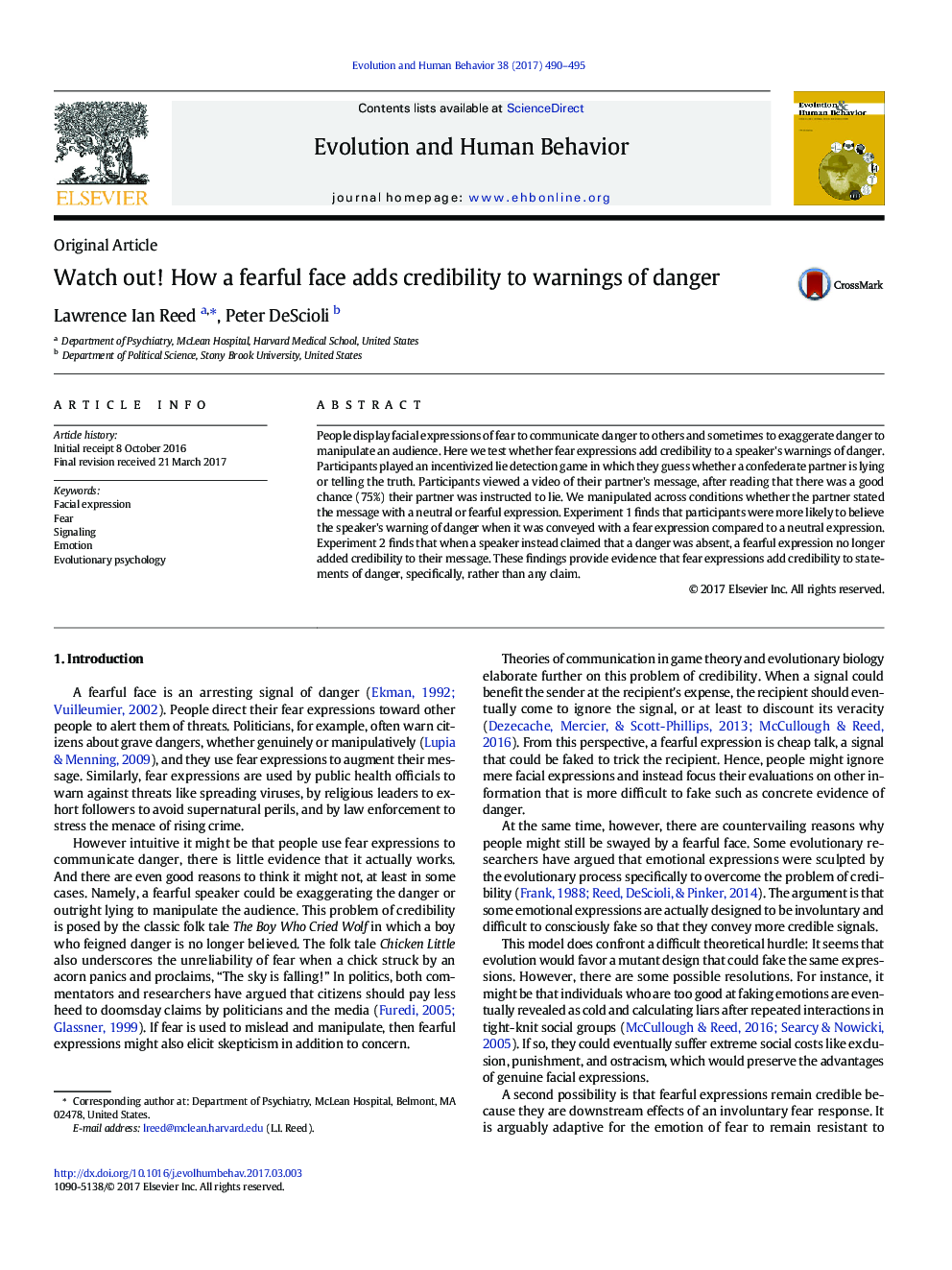| Article ID | Journal | Published Year | Pages | File Type |
|---|---|---|---|---|
| 5044815 | Evolution and Human Behavior | 2017 | 6 Pages |
People display facial expressions of fear to communicate danger to others and sometimes to exaggerate danger to manipulate an audience. Here we test whether fear expressions add credibility to a speaker's warnings of danger. Participants played an incentivized lie detection game in which they guess whether a confederate partner is lying or telling the truth. Participants viewed a video of their partner's message, after reading that there was a good chance (75%) their partner was instructed to lie. We manipulated across conditions whether the partner stated the message with a neutral or fearful expression. Experiment 1 finds that participants were more likely to believe the speaker's warning of danger when it was conveyed with a fear expression compared to a neutral expression. Experiment 2 finds that when a speaker instead claimed that a danger was absent, a fearful expression no longer added credibility to their message. These findings provide evidence that fear expressions add credibility to statements of danger, specifically, rather than any claim.
